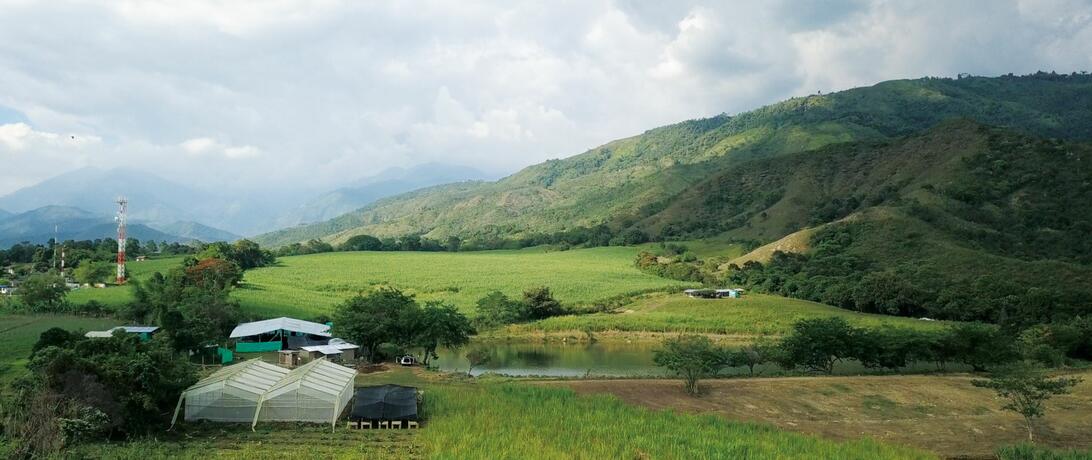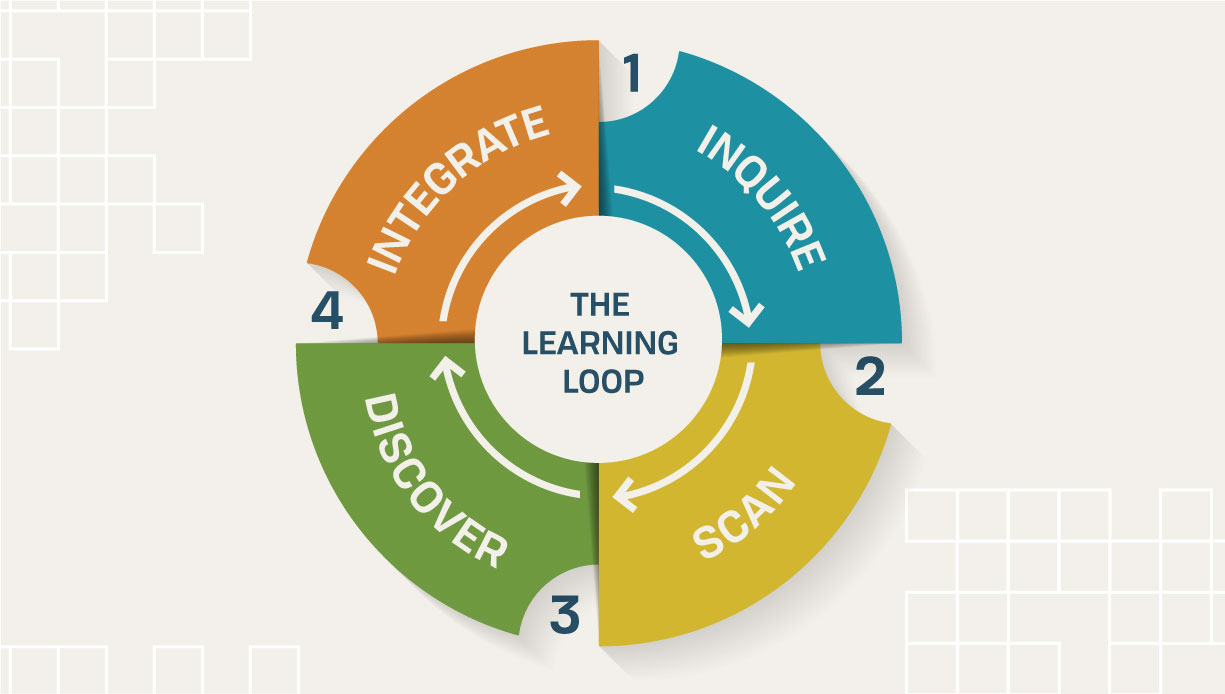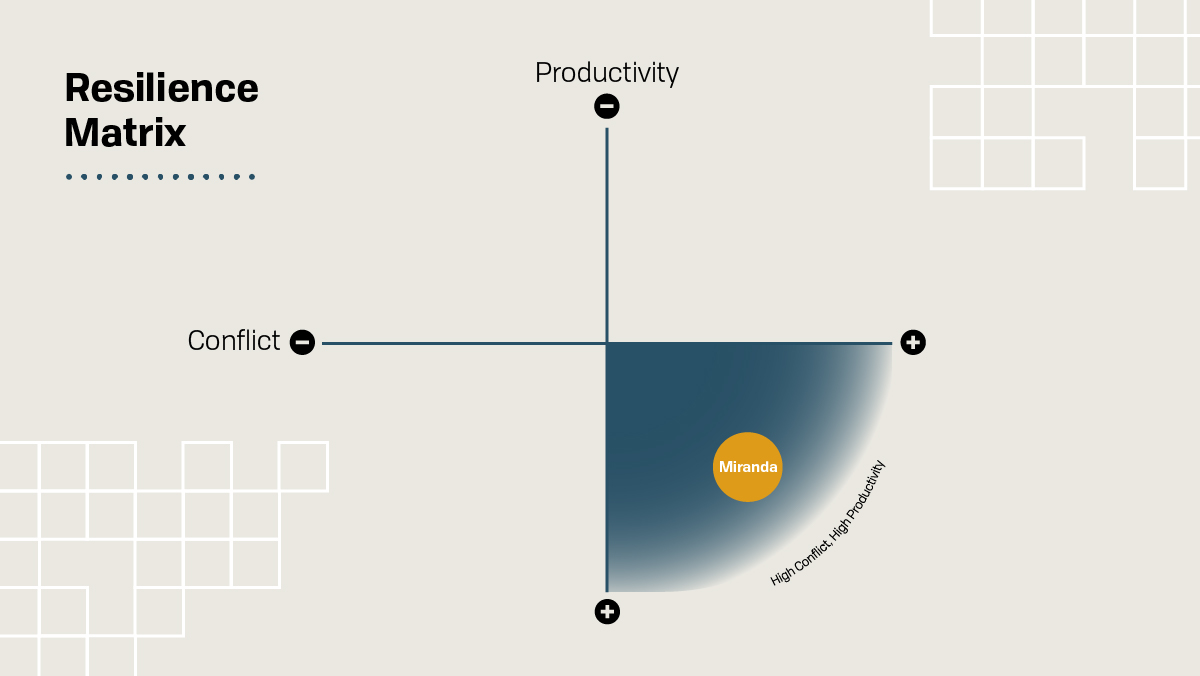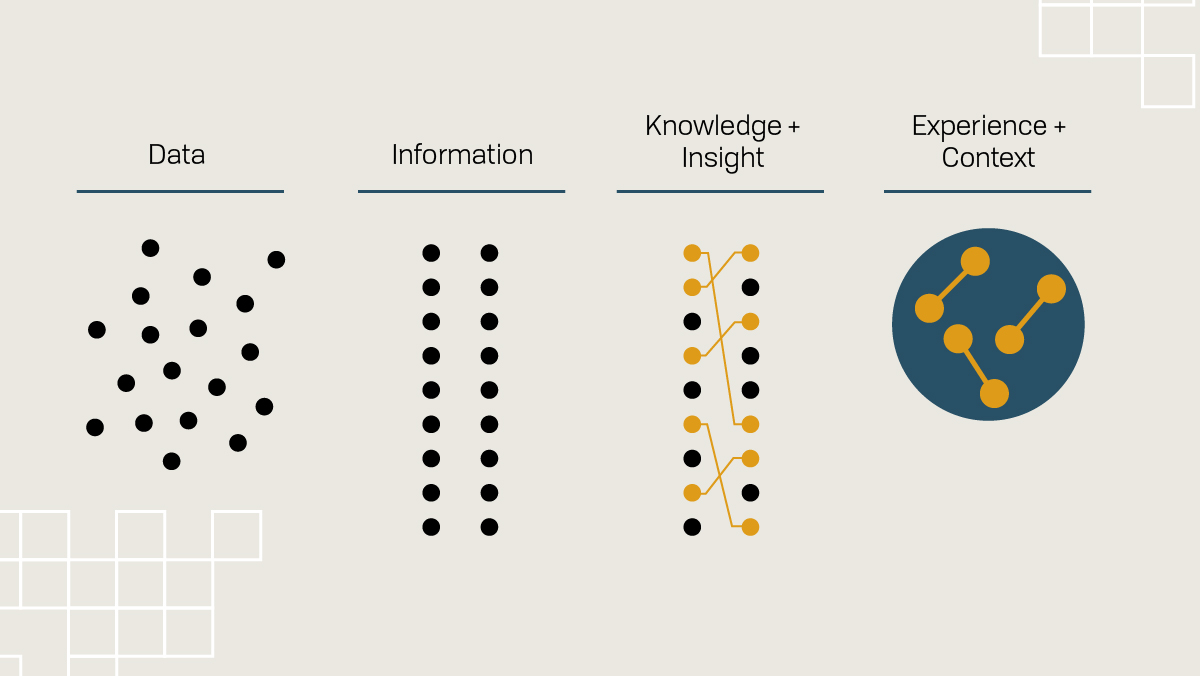
Leveraging the power of collective sensemaking can amplify the impact of learning efforts and help organizations practice adaptive management more effectively. This, in turn, enables organizations to proactively manage risks and seize emerging opportunities for scaling impact.
In the first part of this series on learning practices at One Earth Future (OEF), we delved into the Learning Loop–OEF’s ongoing learning process–and discussed why it's a vital organizational competency for navigating the increasing complexity in the world. In this piece, we dive deeper into the Discover stage of OEF’s Learning Process. Following the Scan stage and preceding the Integrate stage, Discover involves turning new information into meaningful knowledge. Here we connect the data-derived insights with the insights, intuitions, and experiences of the team on the ground. As part of Discovery, we conduct “Sensemaking Circles,” a facilitated discussion that gives rise to collective sensemaking. Below we’ll explore more in-depth the concept of sensemaking as part of OEF’s learning toolkit and discuss an example from our work in Colombia.

Realizing the necessity of sensemaking efforts
Working in complex contexts requires us to humbly recognize that the problems we aim to address are multifaceted, highly interconnected, and impossible to capture in their entirety. As a result, measuring and evaluating ‘impact’ in a holistic manner can be difficult. Therefore, we must do our best to simplify the complexity and prioritize our attention on specific parts of the context, optimizing towards a limited number of defined monitoring and evaluation (M&E) metrics.
While M&E is a necessary and useful tool for capturing information on expected progress and desired impact, it also carries risks. Over the last decades, traditional M&E frameworks have helped our field make enormous strides by aiding organizations like ours be more effective, reflective, and able to communicate the impact of our work and the investments made. However, when traditional M&E is implemented alone, it brings the risk of missing important effects of the work or changes in the context. Furthermore, it may overlook the interconnections between different types of information and their practical implications. Too often, M&E data is used primarily as a blunt tool to show evidence of success (or failure) along narrow lines that seem most important—and that’s it. The true potential of M&E data can enable much more profound insight and nuanced understanding of what works, what doesn’t, why, and how things can be improved on an ongoing basis.
Sensemaking is a practice to help us bridge the gap between data and experience. It is fundamentally an exercise of organizing information and engaging the people closest to the source of that information to derive meaning from it. Meaning means being able to look at something and answer the question: “Why does this matter?” However, this endeavor requires a degree of preparation. Much of the data we have available from M&E collection efforts can seem fragmented and unrelated, which can cause us to miss much of its meaning. Additionally, individuals’ interpretations of the data can lack related and relevant information, such as changes in the context (e.g. political, security, socioeconomic trends), stakeholder narratives (e.g. focus group notes, key informant interviews), or institutional knowledge from prior experiences. Merging this wide range of information by finding the relationships between them and making connections is a necessary step in the discovery of new insights. Sensemaking practices supported by this holistic representation of what is happening can, in turn, enable more informed and impact-driven decision-making. It can also yield a more nuanced understanding of the information, highlighting unexpected findings and detecting emerging trends and patterns that may not have been obvious or anticipated.
Although sensemaking is a natural cognitive process that we use individually on a daily basis to make sense of our environments and determine how we should best act in them, organizational (aka collective) sensemaking adds the challenge of consensus. This challenge of arriving to a shared understanding and agreement between individuals with different perspectives, experiences, and agendas, requires an intentional effort to harness these differences into collective potential for insight and innovation.
Case Study: Applying sensemaking in learning efforts regarding on resiliency of a rural economic development program
A recent example of our sensemaking process in action resulted in practical insights on how we can optimize the resiliency of our work in rural Colombia with OEF’s PASO Colombia program.
PASO Colombia is a program tasked with advancing economic development and social cohesion through the establishment of rural hubs for community-building, agricultural education, production, and commercialization. These hubs are known as Rural Alternative Schools, or ERAs, short for their name in Spanish (Escuelas Rurales Alternativas). PASO has 16 active ERAs in multiple municipalities around Colombia. Many of these territories are prone to security threats due to the illicit and often violent activities that have been ongoing for many years, despite government and international efforts to mitigate the violence. These destabilizing contextual conditions have been one of the primary reasons for the failure of peacebuilding efforts in rural Colombia.
Over the past 6 years, ERAs have proven to effectively facilitate the integration of marginalized groups into civil society, promote social cohesion, and advance livelihoods. Now, focusing on the sustainability of impact for these hubs, as part of its learning agenda, the program identified its need to understand how to bolster the characteristics that strengthen the resiliency of these ERAs to potential security threats. Below we outline how we prepared, executed, and closed the loop on our sensemaking efforts around ERA resiliency.
1. Deconstructing Resiliency
The sensemaking process began by breaking down the ERA model to understand the foundations on which its impact relies. This allowed us to more specifically target the explicit (operational, strategic) and implicit (social, cultural) factors that contribute to the stability of these foundations. For ERAs, we identified these foundations to be the model’s ability to generate economic productivity, cultivate social cohesion, foster self-governance, and incentivize environmentally sustainable agricultural practices. From here, however, we needed to deepen our understanding of what reinforces these foundations, what makes them vulnerable, and what effect they have on one another (ie. how does social cohesion relate to economic productivity? How does economic productivity relate to the community’s ability to self-organize in response to heightened security threats?). In order to address these multi-faceted questions, we needed to integrate qualitative and quantitative data and discover the underlying patterns and insights.
2. Assembling Relevant Information
Good sensemaking requires multiple sources of information to help capture a comprehensive picture. We assembled information from four primary sources:
- Quantitative Data: The basis of our evaluation relied on empirical quantitative data collected over four years. It was important to articulate the story that the numbers were telling us about the impact and functionality of each foundation for each ERA. We conducted an initial quantitative analysis of each ‘foundation’ based on M&E data sourced from surveys and outcome indicators, and ranked the ERAs based on their performance. This allowed us to hone in on the ERAs that had both positive and negative outlying results with respect to metrics related to the foundations. This quantitative data, however, had yet to be contextualized with stakeholder experiences and contextual factors outside of our direct monitoring efforts.
- Narrative Analysis: We sourced qualitative data from interviews with ERA coordinators, stakeholder focus groups, and narrative feedback captured as part of our annual survey process. The focus of this data collection process was to capture the underlying nuances and on-the-ground realities that could provide context to the quantitative results. A critical step in this process was ensuring a safe and inclusive space for individuals to share their experiences and sentiments about the program’s work and its impact. Overlaying these narratives onto baseline quantitative data allowed us to strengthen our ‘story of impact’ that would eventually guide our overall evaluation.
- Context Data: Incorporating context data was a crucial aspect for evaluating resiliency as it allows us to understand how the ERAs have been able to withstand changes in their surrounding contexts. By sourcing context data from territorial security datasets that we have been measuring as part of our work in Colombia, along with data from external sources on regional-level contextual trends and changes, we were able to gain a better sense of the impact of context variables on PASO’s work, and conversely, the effect of PASO’s work on context variables.
- Institutional Knowledge: We also sourced data from our institutional knowledge repository about insights and lessons learned that would be relevant to our evaluation of resiliency. This included knowledge gained from OEF’s other programs, past projects, projects with partners, and research from the program’s past.
3. Organizing the data for Sensemaking
After completing our information gathering, we needed to find creative ways to organize and visualize the data in a way that would reveal and articulate patterns and relationships between the different sources. The goal of this part of the process was to offer a visual representation that captures the aggregation and interconnectedness of the data, which could then serve as a more holistic point of reference for the team to derive further insights and implications during the Sensemaking Circle in the next step. One of the most effective methods we used to accomplish this was mapping the foundations of the ERAs in relation to contextual security threat data. One of the most effective ways we did this was to map the foundations of the ERAs in relation to contextual security threat data. This allowed the program to see ERAs mapped onto a “resilience matrix”. This exercise revealed three important groups: ERAs that were able to maintain (or improve) their functionalities despite security threats (high productivity under high-security threats), ERAs struggling on both fronts (low productivity under high-security threats), and ERAs signaling the need for operational improvements (low productivity under low-security threats).

4. Making Sense of the Whole
With our information now assembled, re-organized, and visualized, it's time to employ the “group genius” of the team to connect the dots and discover new implications. To achieve this, we facilitated what we call a Sensemaking Circle–a workshop intentionally designed to spur the generation of new insights on impact and resiliency and identify concrete actions to take forward. These (mostly) virtual sessions use a combination of online collaboration tools (e.g. virtual whiteboard and post-its), expert facilitation, and modules designed to encourage inclusive participation, the exchange of knowledge, and the emergence of new ideas.

5. Applying the Knowledge
The final step in the process was to integrate the output of the Sensemaking Circle insights and implications back into the program's workflow through adaptive planning cycles–a process that is fundamental to OEF’s management operations. This involves using the knowledge gained to inform decision-making, strategic planning, and project implementation. We facilitate this part of the process by producing synthesis reports that identify the insights, their implications, and an action plan to integrate this into the program’s work. The new knowledge gained as a result of this process is then imported into our institutional knowledge repository and tagged accordingly to be used for future sensemaking efforts. Over time, as our institutional knowledge grows, our sensemaking capabilities strengthen, and as a result, we are able to make more informed and impact-maximizing decisions.
The Concrete Results of PASO’s Sensemaking Around ERA Resiliency
Some findings that resulted from the sensemaking process regarding the factors that contribute to an ERA’s resiliency in the face of security threats are outlined below. These findings led to the development of assessment criteria to be applied to ERA efforts moving forward to ensure that resiliency-supporting characteristics are prioritized to reduce the vulnerability of outcomes achieved in the context of heightened security threats.
- Resilient ERAs place a strong emphasis on building local competencies around sustainable and viable agricultural practices and products unique to the territories.
- Resilient ERAs place a strong emphasis on creating and finding opportunities that strengthen local competencies around self-governance and leadership of the ERA and its resources.
- Resilient ERAs have strong production and commercialization strategies that leverage local crop diversity that can be converted into value-add products and sold at higher margins in local, regional, and international marketplaces.
- Resilient ERAs have used their sustainable economic productivity to gain access to credit which enables increased market-making and commercialization opportunities.
- Resilient ERAs have strong, diverse, and complementary network of partners that are aligned in their goals and expectations.
- Resilient ERAs take inclusivity seriously and leverage the skillsets, interests, and priorities of all participants.
As part of the Discovery stage of OEF’s continuous learning and improvement process, this sensemaking effort supports an institutional culture and set of practices that we find critical to ensuring we are always optimizing for maximal impact:
- It holds us accountable to how our impact is unfolding beyond what we are directly targeting.
- It enables us to see the signals for oncoming risks and opportunities more proactively.
- It provides a clearer and more holistic representation of the realities on the ground which can help us align our expectations and management practices more effectively.
- It helps reveal the underlying dynamics of the context which can inform how we can leverage these dynamics to increase the odds of success for our intervention.
- It forces us to update our assumptions and re-establish a shared narrative.
In conclusion, sensemaking is a powerful tool for organizations seeking to improve their ability to navigate complexity and remain adaptive to emerging changes. Additionally, it is a highly effective way to build tacit knowledge into the process of organizational decision-making–a source of knowledge that is often underutilized but holds tremendous insight and importance. At OEF, we engage in sensemaking whenever we recognize that we don’t have a full-picture understanding but are faced with the need to make decisions on how to move forward. By bringing together diverse perspectives and experiences, and by integrating data-derived insights with contextual information, sensemaking allows organizations to derive meaningful knowledge and informed decision-making. In our work at One Earth Future, sensemaking has been a vital tool in optimizing the impact and sustainability of our peacebuilding efforts. Through the example of our work in Colombia, we have seen how sensemaking can lead to practical insights and inform program adaptations that contribute to greater resiliency and effectiveness. As we continue to navigate the complexities of the peacebuilding field, sensemaking will remain a key practice in our learning toolkit.
Article Details
Published
Written by
Program
Content Type
Opinion & Insights